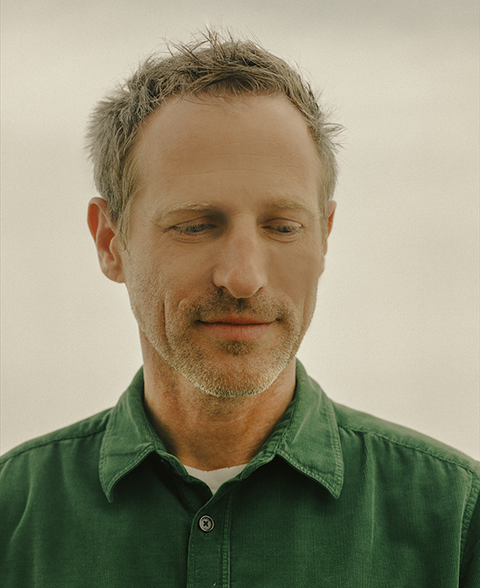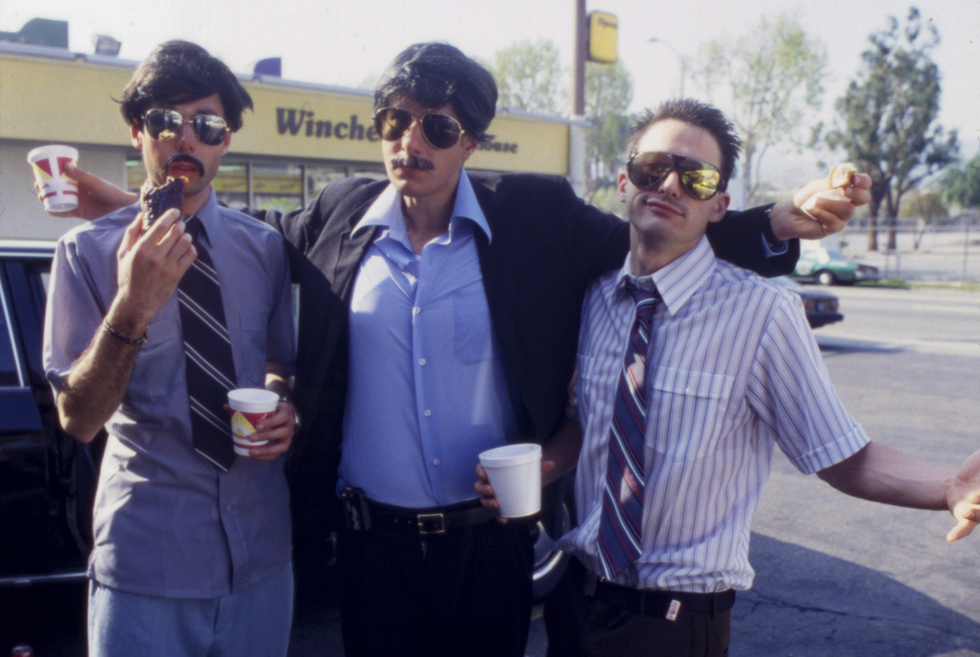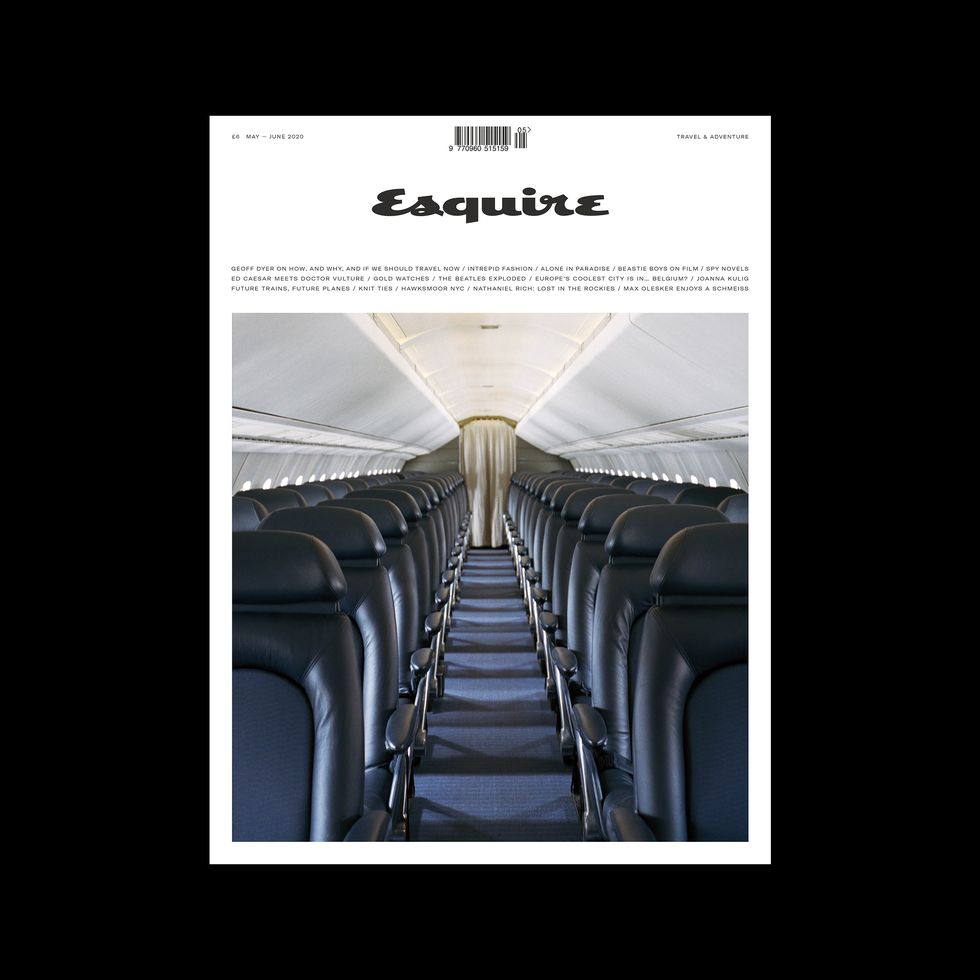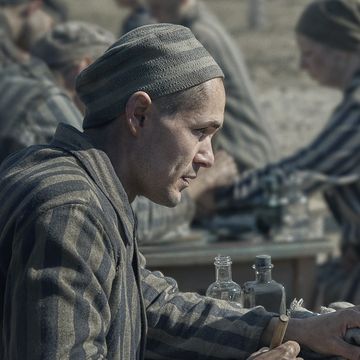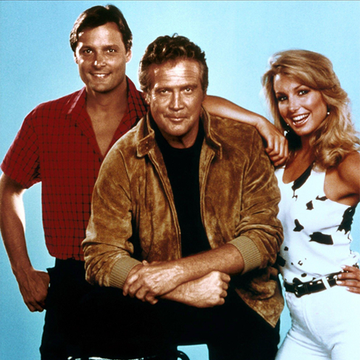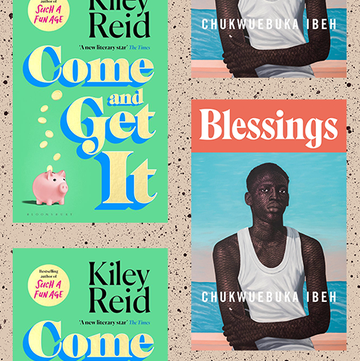In 2018, Michael “Mike D” Diamond and Adam “Ad-Rock” Horovitz released Beastie Boys Book, a memoir as brilliant and unorthodox as their music. Its 571 pages were packed with first-person anecdotes, photographs, lists, illustrations, recipes, mixtape playlists, flyers and shaggy dog stories. It also served as an often heart-breaking tribute to their best friend and bandmate, Adam “MCA” Yauch, who died of cancer in 2012. It went to the top of The New York Times’ best-seller list and the audiobook was nominated for a Grammy Award.
Then came “Beastie Boys Story”, a two-man, three-and-a-half-hour live show based on the book and co-written and directed by their frequent collaborator, the film director Spike Jonze, of Being John Malkovich (1999) and Her (2013) fame. During a handful of performances in New York and Philadelphia, Diamond and Horovitz traded stories and readings in front of a giant screen: video clips, home movies and stills adding colourful new dimensions to an already colourful tale.
Now comes Beastie Boys Story, the film of the show of the book. Billed as “a new format...the live documentary” it was also co-written and directed by Jonze. That the Beastie Boys’ story lends itself to so many mediums is tribute to the story itself. There may well be more unlikely tales in music but you’d be hard-pressed to name them. Not just that three middle-class, white kids became the world’s biggest-selling rap band (an accolade they retain) but all the silly stuff in-between.
The fact that they picked their manager because he managed Kenny Rogers and Lionel Richie (Horovitz: “And we thought that shit was funny!”). That they recruited key satellite member “Keyboard” Money Mark after he turned up to fix their gate. One clip from 1984 shows the DJ Afrika Bambaataa being asked on live TV if he’s heard “Cooky Puss”, one of the Beastie Boys’ earliest tracks; the person asking is a young Michael Diamond, who has snuck into the studio. (Bambaataa approvingly deems it “tough”.)
I interviewed Diamond, Horovitz and Jonze recently over Skype. Diamond and Jonze were in Los Angeles, on the patio of Jonze’s house. Horovitz was in Pasadena, in bed. I say interview, but you can’t interview them: what happens is you ask a question, and they mess about.
For example, in reply to a query about using the show as a mea culpa for some of their less-flattering youthful follies — touring with a hydraulic penis, sacking original member Kate Schellenbach because she was a girl, the lyrics to “Girls” — Horovitz asks Jonze for a tour of his house. So he picks up his laptop and shows him.
Jonze: “OK... here’s a T-shirt... here’s a painting of a cowboy...”
Horovitz [comically underwhelmed]: “OK.”
Jonze: “Blue refrigerator...”
Horovitz: “OK.”
Jonze: “Here’s a horse.”
Horovitz: “I’m scared of horses, but that...that’s just a drawing.”
One of the intended takeaways of both the book and the live show is Adam Yauch’s importance. The driving force of the group, its conscience and intellectual backbone, it was Yauch who came up with the cover of Paul’s Boutique (1989), the bassline that led to them writing the immortal “Sabotage” (video directed by Spike Jonze), and Yauch who changed the sound of the band by inventing a DIY sample-looping contraption involving a tape deck and two chairs. (A recreation of which is wheeled on stage for Diamond to inspect.)
“So why did you keep Mike doing the tape thing, but you cut me walking around backstage?” asks Horovitz.
“Mike was in the editing room more than you were, I guess. It was his call,” says Jonze.
“It was actually to do with how it tested with audiences, and people responded...” says Diamond.
“What audience? Who picked those audiences?”
“The Midwest,” says Jonze. “We went through the Midwest on a marketing tour.”
“Wichita,” offers Diamond.
“Marketing-wise, I forget, where am I big again?” asks Horovitz.
“There’s a spot through New England where you tested really well,” says Diamond. “I mean, it’s a small spot.”
One of the cheering aspects, of many cheering aspects, in Beastie Boys Story is how the three of them never stopped having fun. How they took a bunch of niche enthusiasms, all the stuff they were into, and turned it into a near 40-year career. Something similar can be said of Jonze. That’s really something to aspire to.
“It’s not like all of it was easy or highlight-filled,” Diamond says, on stage. “But who gets to work every day with their two best friends?”
“Somehow we got to make this stuff and remain in enough of a bubble doing it that we were able to continue to do what we wanted,”he says, today. “And also, I think Adam would agree with me, that as a band we’re not good at writing pop songs necessarily. But somehow we had some songs that worked.”
“I remember a long time ago, after one of our shows, Mike’s godmother was backstage,”off-roads Horovitz. “And my sister was backstage, and my sister said something to Mike’s godmother. Just: ‘That was a really nice show’ or something like that, and she said to my sister [theatrical voice], ‘Yes! I always knew Michael was gonna be a star’. And my sister was, like,‘You sure about that? Really? Mike?’”
“Somehow we all grew up in a way where nobody told us we couldn’t do it,” says Jonze.
“In the Eighties and early Nineties, in the skateboard world and in punk music, nobody gave a fuck about what you were doing other than the people in your world. Nobody cared about skateboarding outside of this very, very small group of people. So, it all came from growing up like that.
“When I think about making the ‘Sabotage’ video [featuring the band in the opening credits to a fictional Seventies’ cop show], it was just, maybe 10 of us, running around with two vans and that car, stopping in different locations. Like that motel where one of the doors happened to be open from the cleaning lady...” he says. “We didn’t have permits or permission to shoot anywhere. We made it basically like we made skate videos.
“So, it was really surprising when that became this insane hit on MTV. That was the first video I’d made that was on that level and that totally changed everything for me [Jonze would go on to work with Björk and The Notorious BIG and elevate pop videos as an art form in the Nineties; Hollywood and the Academy Awards followed]. Just fucking around with our friends became this huge turning point in my life.”
For all the fucking around with friends, Beastie Boys Story also packs emotional heft. All the dressing up and doing bong hits, all the lyrical references to obtuse Looney Tunes characters and Happy Days, didn’t necessarily lend itself to self-reflection; but in editing the stage show down to a two-hour film, Jonze, the storyteller, has steered them down a path. Beastie Boys Story is also really sad.
“Shit gets real,” says Horovitz. “Yeah.”
“I love them as a band and I love them as people, and I loved Yauch,” says Jonze. “I was drawn to try to tell the parts of them and their band and their story that move me and inspire me and touch me. I was looking at it a little more from the outside. When we were writing I was asking questions that were about that.And that became the story.”
“I don’t know,” says Horovitz. “It’s very weird to write about yourself, right? I don’t know if you notice but our music isn’t really that telling of us, personally. It’s not something that we really, like, do. So, we fought Spike on that a little. But it makes sense. It’s a movie. I thought it was just going to be a movie of the stage show. I didn’t see that it was going to be this other thing. Spike, did you plan on it being this other thing?”
“Maybe I forgot to tell you,” says Jonze.
There won’t be any more Beastie Boys music. But after the book, the show and now this film, could there be something else? Could the three of them work together again?
“I haven’t brought this up to the group or anything, so this is a real scoop,” says Jonze. “But I think if we joined forces: ‘Beastie Boys On Ice’. Because ‘...On Ice’. You add ‘...On Ice’ to it. Big. Goes exponential. Every time.”
“Pyro,” says Diamond.
“And in this day and age, when everyone’s on their phones, that’s worth coming out of your house for,” says Jonze.
“You can’t replicate that experience of going to an arena,” says Diamond.
“Can you be on your phone, on ice?” asks Horovitz.
Beastie Boys Story is on Apple TV+ from 24 April


